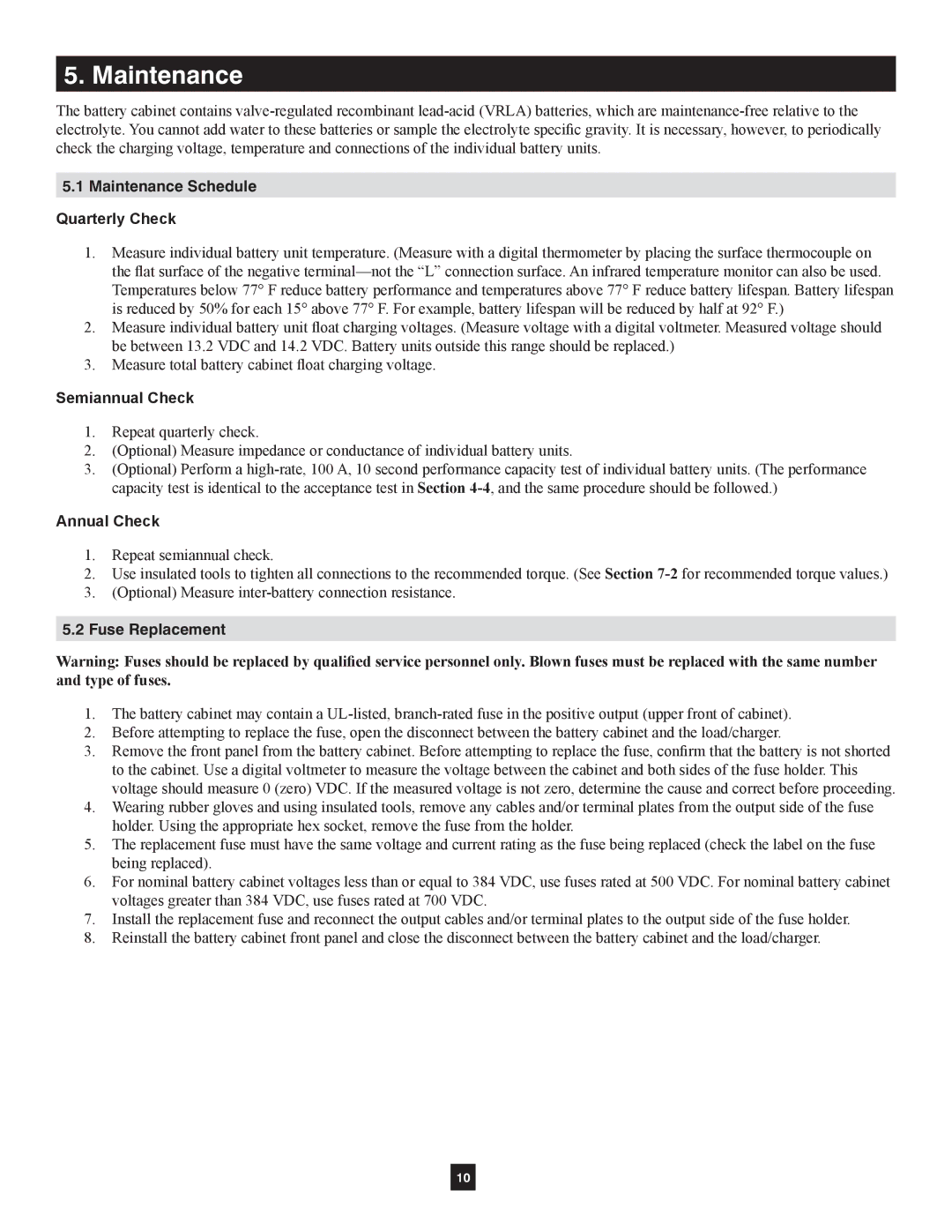Extended-Run Single-Phase Battery Cabinet specifications
The Tripp Lite Extended-Run Single-Phase Battery Cabinet serves as an essential backup power solution, designed for environments where prolonged uptime is critical. This compact and efficient battery cabinet is tailored primarily for use with Tripp Lite's SmartPro line of UPS systems, delivering reliable power protection and extended runtime capabilities for critical equipment.One of the main features of the Tripp Lite Extended-Run Battery Cabinet is its impressive scalability. This unit is designed to expand the runtime of UPS systems significantly, enabling users to keep their systems operational during extended power outages. With the ability to house additional batteries, it allows organizations to customize their backup power based on specific needs. The cabinet can accommodate multiple battery packs, providing flexibility and ease of use.
In terms of design, the battery cabinet is engineered for optimal performance. Its robust construction ensures durability and the ability to withstand the rigors of various industrial settings. The cabinet also features a compact footprint, enabling seamless integration into server rooms, data centers, and other critical environments without consuming excessive space.
Advanced technologies are evident in the cabinet's smart charging capabilities. The integrated management features enable precise monitoring and control, ensuring that batteries are efficiently charged and maintained. The intelligent battery management system maximizes battery life while minimizing maintenance requirements, making it suitable for organizations that rely on continuous operation.
Moreover, the Tripp Lite Extended-Run Battery Cabinet is equipped with a user-friendly interface, allowing for straightforward installation and configuration. Visual indicators provide clear status updates, ensuring users can monitor battery health and performance with ease. The seamless communication with the UPS systems further enhances the overall user experience, providing real-time updates and alerts.
In conclusion, the Tripp Lite Extended-Run Single-Phase Battery Cabinet represents a dependable and scalable power solution for businesses that demand lasting performance. Its combination of advanced technology, rugged design, and user-friendly features makes it an ideal choice for safeguarding critical equipment against power interruptions. This battery cabinet not only enhances the reliability of UPS systems but also provides peace of mind knowing that essential operations can continue uninterrupted during extended outages.

